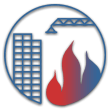|
|
|
|
|
|
|
|
|
|
|
|
 |
 |
 |
 |
|||||||
|
|
||||||||||
 |
 |
 |
 |
 |
 |
 |
 |
|||
Software
Building Economic Analysis Software
The BEES (Building for Environmental and Economic Sustainability) software brings to your fingertips a powerful technique for selecting cost-effective, environmentally-preferable building products.
BridgeLCC is user-friendly life-cycle costing software developed by the National Institute of Standards and Technology (NIST) to help bridge engineers assess the cost effectiveness of new, alternative construction materials.
The BLCC (Building Life-Cycle Cost) programs are developed by the National Institute of Standards and Technology to provide computational support for the economic analysis of capital investments in buildings.
The Cost-Effectiveness Tool for Capital Asset Protection is user-friendly, decision-support software to aid building owners and managers in the selection of cost-effective strategies that respond to natural and man-made hazards.
The Risk Mitigation Toolkit is a central source for identifying and retrieving risk assessment and risk management guidance documents, databases on the frequency and consequences of natural and man-made hazards, procedures for performing economic evaluations, and software tools needed to develop a cost-effective risk mitigation plan for constructed facilities.
The Life-Cycle Cost Analysis Tool for Chem/Bio Protection of Buildings was developed by the National Institute of Standards and Technology in partnership with the U.S. Environmental Protection Agency’s Homeland Security Research Center. It helps users make consistent comparisons of Chem/Bio protection strategies based on established economic evaluation practices.
Building Materials Research Software
Cement Hydration and Degradation Modeling Software
These models have come out of the HYPERCON: Prediction and Optimization of Concrete Performance research program and its predecessors.Building Environment and Performance Software
MOIST
User-friendly, personal computer program that predicts the one-dimensional transfer of heat and moisture. MOIST 3 is designed to run on any IBM-compatible personal computer having a Microsoft Windows operating system.EVAP-COND
Simulation models for a finned-tube evaporator and condenser.CONTAM
Multizone indoor air quality and ventilation analysis computer program designed to help you predict: Airflows, Contaminant Concentrations, and Personal exposure.CYCLE_D
Vapor Compression Cycle Design Program.REFLEAK
Leak/Recharge Simulation Program for Refrigerant Mixtures.Construction Industry Software
CIS/2 to VRML and IFC Translator
Translates a CIS/2 (CIMsteel Integration Standards) file into a 3D interactive VRML model of a steel structure or an IFC (Industry Foundation Classes) file that can be imported to many CAD applications to do model coordination with other parts of a structure.
Fire Simulation and Research Software
ALOFT-FTTM - A Large Outdoor Fire plume Trajectory model - Flat Terrain
ASCOS - Analysis of Smoke Control Systems
ASET-B - Available Safe Egree Time - BASIC
ASMET - Atria Smoke Management Engineering Tools
BREAK1 - Berkeley Algorithm for Breaking Window Glass in a Compartment Fire
CCFM - Consolidated Compartment Fire Model version VENTS
CFAST - Consolidated Fire and Smoke Transport Model
DETACT-QS - Detector Actuation - Quasi Steady
DETACT-T2 - Detector Actuation - Time squared
ELVAC - Elevator Evacuation
FASTLite - A collection of procedures which builds on the core routines of FIREFORM and the computer model CFAST to provide engineering calculations of various fire phenomena,
FIRDEMND - Handheld Hosestream Suppression Model
FIRST - FIRe Simulation Technique
FPETool - Fire Protection Engineering Tools (equations and fire simulation scenarios)
Jet - A Model for the Prediction of Detector Activation and Gas Temperature in the Presence of a Smoke Layer
LAVENT - Response of sprinkler links in compartment fires with curtains and ceiling vents
NIST Fire Dynamics Simulator and Smokeview - The NIST Fire Dynamics Simulator predicts smoke and/or air flow movement caused by fire, wind, ventilation systems etc. Smokeview visualizes the predictions generated by NIST FDS.
ToGS - Turnout Gear Selector (ToGS) helps the manufacturers, purchasers and users of fire turnout gear evaluate and select the turnout coat and pants ensemble that best meets their needs.
GetGo - GetGo transfers results (temperatures, deflections and strains) between a structural model that uses beams and shells, and a thermal model that uses solid (brick) elements. GetGo also detects insulation failure due to excessive strain according to user-defined criteria. Although this computer interface was implemented for one particular software package (Ansys), the methods developed are general and can be adapted to other, similar software.
|
Privacy Policy/Security Notice/Accessability | Disclaimer | FOIA NIST is an agency of the U.S. Department of Commerce |

|
Last updated: 9/10/2008